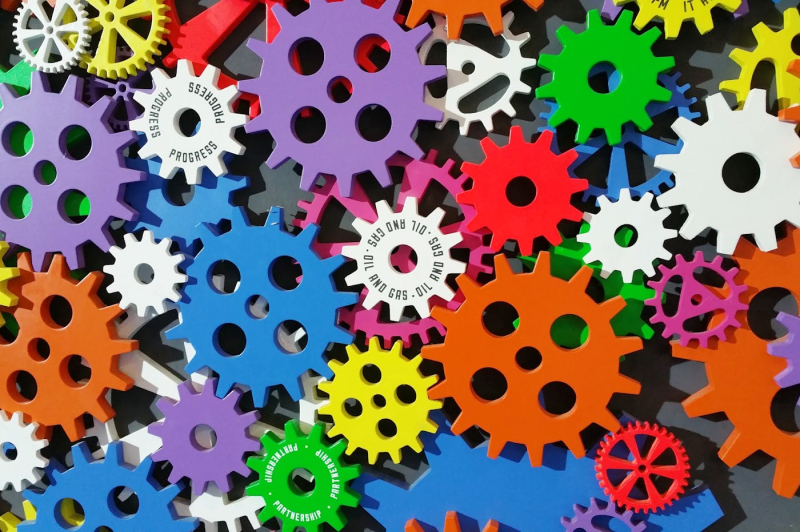
© Digital Buggu/Pexels
Today we know that AI affects the environment; Even if this impact is difficult to measure, we know that it is very considerable. Dantesque electricity consumption, use of rare materials and large quantities of water: the picture is not exactly rosy. In this area, TinyML could greatly change the situationby making AI more accessible and above all more sustainable. What exactly do we mean by TinyML and to what extent does it represent a drastic change for the AI sector?? As a reminder, machine learning (ML) “’ ;nbsp;is a field of study of artificial intelligence which aims to give machines the ability to learn from data, via mathematical models& ;nbsp;» according to the definition of the CNIL.
A technology with reduced dimensions, but considerable impact
What distinguishes TinyML from classic ML is its ability to operate and to be integrated into much more modest devices. These being smaller, they are necessarily more economical to operate. Their memory is measured in KB (kilobytes) and some of their components can cost less than a dollar.
A characteristic that sets it apart from traditional systems and which therefore allows a much wider adoption of AI in different domains. There are specific development kits like Seed Studio or Arduino that make it easier for developers to access TinyML. These offer, for example, sensors (movements, sounds, etc.) which make it possible to develop highly personalized AI applications.
In terms of applications, TinyML can be used in a fairly wide variety of fields. For example, the EU-backed Horizon 2020 program uses TinyML to monitor water parameters with the aim of making aquaculture more sustainable. The start-up Useful Sensors also uses TinyML to design autonomous conversational agents without an Internet connection. This application also uses it to identify mosquitoes in poor areas where they can do a lot of damage.
In short, TinyML demonstrates extreme versatility, and can meet a large number of needs without requiring the deployment of complex infrastructures.
Operation and advantages: revolutionary autonomy
Instead of depending on an Internet connection and a cloud like most traditional AI systems, TinyML is based on another principle. Pre-trained AI models optimized to operate in constrained environments are thus integrated into devices. This could be environmental monitoring devices, smart bracelets or watches, wildlife tags or collars, etc.
The TinyML therefore operates in total independence; autonomy that allows it to collect data, analyze, and make decisions in real time without any connection. This unique design gives it two major advantages.
First, given the disappearance of the data transition between devices and a cloud, the consumption of ’ energy is thus drastically reduced. This aspect helps to maintain a much lower carbon footprint than the classic ML. Secondly, it is easily deployable in areas of the globe where Internet access is limited.
Finally, its ability to operate in total autonomy makes it possible to develop tailored applications that more precisely meet local needs. With dependence on global communications infrastructures no longer an obstacle, TinyML is an open door to thousands of new perspectives.
Impacts and developments: from global to local
If there is indeed a project that illustrates the ;commitment to the development of TinyML in the most disadvantaged countries, it's really TinyML4D. Supported by Harvard University and UNESCO, this initiative aims to stimulate local innovation and democratize access to education in the field of TinyML . This currently concerns 40 countries, including Malaysia, Ethiopia and Colombia.
For this, distributions of material kits are organized at the destination researchers, local entrepreneurs or students in order to help them develop personalized solutions. Once again, the applications unlocked by this project are very varied: sports monitoring, water or wildlife monitoring, etc.
In addition to offering tools and training to populations, TinyML4D helps build solid foundations for future technological innovations at the local level. These will, therefore, be entirely aligned with the aspirations and needs of the communities concerned.
TinyML is revolution within the revolution ; obviously much quieter and out of the spotlight of the general public than a certain ChatGPT for example. However, this technology has the potential to radically transform AI, so that less well-off populations can also benefit from its benefits. However, to ensure smooth development of TinyML, it is very important to seriously address the issues that also affect traditional machine learning. Increased volume of e-waste, data security and bias monitoring in developed TinyML models; the challenges to overcome are more or less similar.
- TinyML is a revolution in the field of AI.
- It makes it possible to develop completely autonomous AI solutions running on small devices.
- The TinyML4D project, led by the & #8217;Harvard University and UNESCO, aims to promote its use in the most disadvantaged regions of the world.
📍 To not miss any news from Presse-citron, follow us on Google News and WhatsApp.
[ ]

